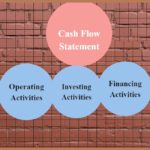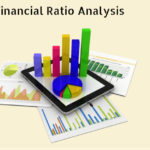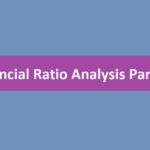Drawbacks of DCF Analysis
In this chapter, we will discuss some important issues that can have a huge impact on your investment decisions. In the previous chapter, we saw how the DCF model can determine the intrinsic value of a company’s stock. DCF is probably the best way to calculate a company’s intrinsic value. But this method also has its drawbacks. You should also be aware of these drawbacks. As we have mentioned earlier, the DCF model is based on your assumptions. If your guesses are not correct then this model will not work properly and you will not know the exact price of the stock.
Prediction for DCF – You know that in DCF model we have to make predictions about the future cash flow and business cycle. Doing this is a big challenge not only for fundamental analysis but also for the top management of the company.
It is heavily influenced by the terminal growth rate – the DCF model is heavily influenced by the terminal growth rate. Even a small change in the terminal growth rate has a huge impact on this. For example in the case of ARBL, we have estimated the terminal growth rate at 3.5% after which the share price comes out to ₹368. But if we change the terminal growth rate from 3.5% to 4%, the share price will change to ₹394.
The model needs constant change – even if the DCF model is created, the analyst has to continuously improve it. As the quarterly and yearly data comes in, the analyst has to add this data to the model and modify his/her estimates.
Its focus is long term – DCF model completely looks towards long term investment, for any investor who wants to invest for less than one year, DCF model does not work for him.
Apart from this, you can also miss many opportunities because of the DCF model as this model follows very strict criteria. To avoid these weaknesses, it is important that you try to keep your estimates to a minimum when using this model. Some guidelines for making a good guess:
Growth Rate of Free Cash Flow (FCF) – The free cash flow growth rate should never exceed 20%. No company can continuously grow free cash flow at the rate of 20%. If the company is new and growing fast then you can give it a growth rate of 20% but above 20% rate is not even for any company.
Estimate how many years – You can assume that the more years you estimate, the better. But it is also true that the longer your guess, the more likely it is to make mistakes. That’s why I usually estimate up to 10 years. And in that also I extract the DCF in two steps.
Extract DCF in two steps – A good approach is to divide the DCF analysis into two steps. In the example of ARBL, we used this method in the previous chapter. Out of 10 years, a different rate of FCF was kept in the first one phase i.e. 5 years and a second lower rate of growth was kept in the subsequent 5 years i.e. in the second phase.
Terminal Growth Rate – As we have discussed earlier, terminal growth rate plays a very important role in the DCF model because even a small change in it makes a big difference in this model. Therefore, it is important to keep the terminal growth rate at a minimum. Personally, I never keep the terminal growth rate above 4%.
Margin of Safety
Remember, no matter how carefully you estimate, but mistakes can still happen. To avoid the impact of this mistake, a principle of margin of safety or safety margin comes into play. This theory was presented by a person named Bank Benjamin Graham in his book “Intelligent Investor”. This principle states that an investor should buy a share only when that share is getting cheaper than its intrinsic value. However, keep in mind that setting a safety net may not make you a successful investor, but yes, the impact of your mistakes can work.
Let me show an example of how I use the principle of safety limits or protection margins in my investments. Let us once again take the example of Amara Raja Batteries Ltd. The intrinsic value of the share is ₹368 per share, in this we applied a modeling error of 10% so that we got the intrinsic value band. The lower price of this band is ₹331. The safety net theory tells us that we should buy shares cheaper than the lower band of the intrinsic price. Usually I buy shares only when I get 30% below the price of the lower band.
You may ask what is the need of this? Are we not working too carefully? Probably yes, but it is important to protect yourself from miscalculations and their consequences. Look at it this way, suppose a stock is looking good to you at ₹ 100, if it gets at ₹ 70 then it would be really good. A good value investor or value investor always thinks like this.
Back to ARBL once again.
The intrinsic value of the share is ₹368
After placing a band of 10% to avoid modeling error, the price of the lower band comes to ₹331
After reducing it by 30% i.e. after applying the margin of safety, this price becomes ₹ 230
At ₹230 it can prove to be a very good investment
Remember, as soon as a good stock starts getting below its intrinsic value, value investors come to buy it and in such a situation, if the stock is getting even lower with the Margin of Safety, then this opportunity should not be missed. There is very little chance like this. Also remember that such opportunities are usually found only in the bear market, when people want to stay away from stocks or their thinking about the market is very disappointing. So if you have money in bearish market then you can get good investment opportunity.
When to sell?
In this entire module we have talked about buying shares. But what about selling? When should we sell? When should I make a profitbook? Suppose you have bought ARBL share for ₹250 and now it is getting ₹730 per share, it means you have made a profit of 192%, which would be considered a very good return, especially when You have earned it in 1 year. So does that mean you should now sell this stock and make a profit? The time to sell a stock is when there is such a defect in it that it becomes uninvestable.
No longer worth investing – Remember, the decision to buy a stock is not made by the price. We are not buying ARBL stock just because it is down 15%. We are buying this because that share fulfills all the investment conditions and hence it is an investible share. But if that stock is no longer investable, will we buy it? Taking this further we can say that the stock should be kept as long as it is an investible stock. A company’s stock may remain in stock for many years to make it an investable stock. That is to say, as long as the stock is investable, it should remain in the stock because due to this the share price keeps on increasing and earning for you.
How many shares should be in the portfolio?
How many stocks should you have in your portfolio? There is a lot of debate on this, some people say that by holding more shares, you can diversify your portfolio and some say that if the shares are less then you can earn more. We take a look at what some well-known investors had to say about it:
Set Kalrman – 10 to 15 Stocks
Warren Buffett – 5 to 10 Stocks
Ben Graham – 10 to 30 Stocks
John Keynes – 2 to 3 stocks
I have 13 stocks in my portfolio and I never want to hold more than 15 stocks. Maybe no one should have more than 20 shares.
FINAL CONCLUSION
In the last 16 chapters, we have discussed a lot of issues to understand the fundamental analysis of the market. Now let us once again look at those important things that we should remember-
Be rational – the market keeps on fluctuating. But if you have the patience to stay in the market then you will get benefits from the market. You can earn up to 15 to 18% which is a very good earning. Remember that don’t be in the trap of earning 50% or 100% because even if you make such earning for some time but it cannot be for long.
Take a Long View – In Chapter 2, we talked about why any investor should take a long view. Remember that the longer you stay invested in the market, the more you will get the benefit of compounding.
Look for Investable Conditions – Always look for stocks or stocks in the market that meet investable conditions. As long as those conditions are met in those shares, stay in them and exit when you feel that the company is no longer investable.
Always value the quality of the company – Quality or character is always more important than statistics. Look at the character of the promoters while choosing companies that are worth investing in.
Avoid the noise and use a check list – If you keep looking at your checklist and use it without worrying about what is being said on TV or in the newspapers, then you are definitely investing in a good company.
Using Margin of Safety – Remember it will save you from bad luck.
IPO/IPO- Avoid buying IPO. IPOs are usually expensive. If you also want to buy an IPO, then look at it according to these three steps of equity research.
Keep learning – Understanding the market is not easy, it takes a whole life, so always try to get as much information as you can and learn.

Gaurav Heera is a leading stock market educator, offering the best stock market courses in Delhi. With expertise in trading, options, and technical analysis, he provides practical, hands-on training to help students master the markets. His real-world strategies and sessions make him the top choice for aspiring traders and investors.




